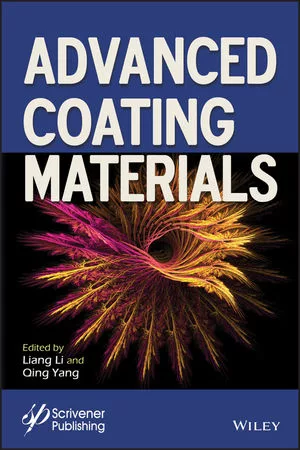Eco-Friendly Coating Systems
Waterborne automotive OEM paints were first used at the beginning of the 1970s in some automobile production plants in the western United States because of laws governing solvent emissions. Their properties, however, were not fully adequate in all climatic conditions — especially where water resistance is concerned — as they were one-coat systems. Consequently, in the search for ways of reducing solvent content, this technology was replaced by non-aqueous dispersions (NAD) and later by high-solids NAD technology.
In Europe, waterborne paint technology was given preference over high-solids technology. The reason is that the metallic effect is practically identical to that achieved with conventional low-solids systems.
There is a clear trend toward waterborne systems in the OEM paint sector. In the United States and Japan, the trend is not so accentuated for various reasons, including the relatively high share of high-solids systems in the OEM sector.
Clariant is one of the world’s leading manufacturers of organic pigments. The main developments in recent years have been in special products for waterborne and low emission, solvent-based paint systems. New products such as Hostaperm Red P2GL-WD® for automotive OEM finishes or Hostaperm Pink E-WD® for architectural finishes were successfully commercialized. One of the main lines of research is on waterborne automotive OEM finishes.
This article provides a general overview of the most important binder systems and the grinding procedure for organic pigments in waterborne systems.
 Credit: Clariant GmbH
Credit: Clariant GmbH
Binder Systems
When switching from a solvent- to a waterborne coating system, there should be no appreciable deterioration in quality. Since paints are as much protective as they are decorative, pigmentation plays an important part.One general problem that crops up in pigment testing of automotive waterborne basecoat systems is the choice of test systems. All reputable OEM paint manufacturers have developed tailor-made binder systems, which differ greatly in their chemical composition. For Clariant’s pigment tests, three test systems were chosen. A comparison of the systems in terms of their composition is shown in Table 1.
Dispersion
Organic pigments in waterborne coatings achieve higher tinctorial strength and better saturation than pigment dispersions in conventional solventborne systems. These results were unexpected because all the organic pigments tested were lyophilic (a material that readily goes into colloidal suspension) and consequently difficult to wet with water. The water in the mill base is probably also of major importance because it is capable of dissolving traces of water-soluble salts, and thus leads to finer dispersion of the pigments. The differing levels of tinctorial strength might be explained by the poorer dispersion in conventional systems.Another clue was found while investigating pigments samples with different salt contents taken from a production batch of Hostaperm Pink E® by fractional elutriation. Independently from the salt content, which is related to the conductivity, the color strength of P.R.122 is practically equal, whereas in the solventborne system with higher salt content or conductivity the color strength drops significantly.
 Credit: Clariant GmbH
Credit: Clariant GmbHPigment Developments
C.I. Pigment Red 179 was chosen as representative of pigment developments for waterborne paint, an important class of pigments for the OEM sector.From the electron microscope cross-sections of paint films that contain Hostaperm Red P2GL® (P.R.179) pigment (see Figure 1), it is clear that this pigment is dispersed better in waterborne coatings.
Distinctly fewer residual agglomerates can be seen in the waterborne basecoat than in the conventional basecoat. But despite the fact that Hostaperm Red P2GL appears to be well dispersed, it is far from being optimally dispersed. One reason for this can be found in the surface treatment of this pigment, which consists of a water-insoluble Ca resinate and a cationic wetting agent. All competitive P.R.179 grades are also given surface treatment, but this differs from one manufacturer to another. Therefore, the P.R.179 products behave differently in the waterborne-basecoat systems, depending on the chemical structure of the surface treatment. This is seen in the varying degrees of poor dispersibility and poor viscosity and/or pH stability.
Limited storage stability is a real problem in the paint industry. Hostaperm Red P2GL-WD®, which has already found use in some OEM colors, is a new product that offers improved properties for waterborne coatings. This pigment is identical chemically to Hostaperm Red P2GL but has a different surface treatment, which in its chemical structure is related to the pigment and improves dispersibility and stability in waterborne coatings.
 Credit: Clariant GmbH
Credit: Clariant GmbHFigure 2 shows that Hostaperm Red P2GL-WD has better dispersibility and higher tinctorial strength than the comparison products.
 Credit: Clariant GmbH
Credit: Clariant GmbH Credit: Clariant GmbH
Credit: Clariant GmbHAnother pigment for waterborne systems is Hostaperm Yellow H5G VP 2295®. This is a special AZO pigment with outstanding durability. It is described in Table 3.
Summary
The majority of organic pigments for automotive paints are fairly easy to disperse and are stable in waterborne paints. There are some problems with pigments that have lyophilic surface treatment, acid substituents in the molecule and also with some metal complex pigments. Altogether the pigments in waterborne systems have higher tinctorial strength and transparency than in a conventional solvent-containing system.In the cases of Hostaperm Red P2GL-WD and Hostaperm Yellow H5G VP 2295, special grades have been developed for water in response to different technical problems.
With the present state of the art, it can be assumed that further developments in the binder sector and even greater emphasis on ecological considerations will result in increased use of waterborne coatings. Pigmentation with organic pigments results in very eco-friendly coating systems.
For more information on pigments, contact Clariant GmbH, Gerhard Wilker, D-65926 Frankfurt/Main, Germany; phone +49/69.305.4959; fax +19/69.305.17904; e-mail Gerhard.Wilker@Clariant.com.
Looking for a reprint of this article?
From high-res PDFs to custom plaques, order your copy today!






